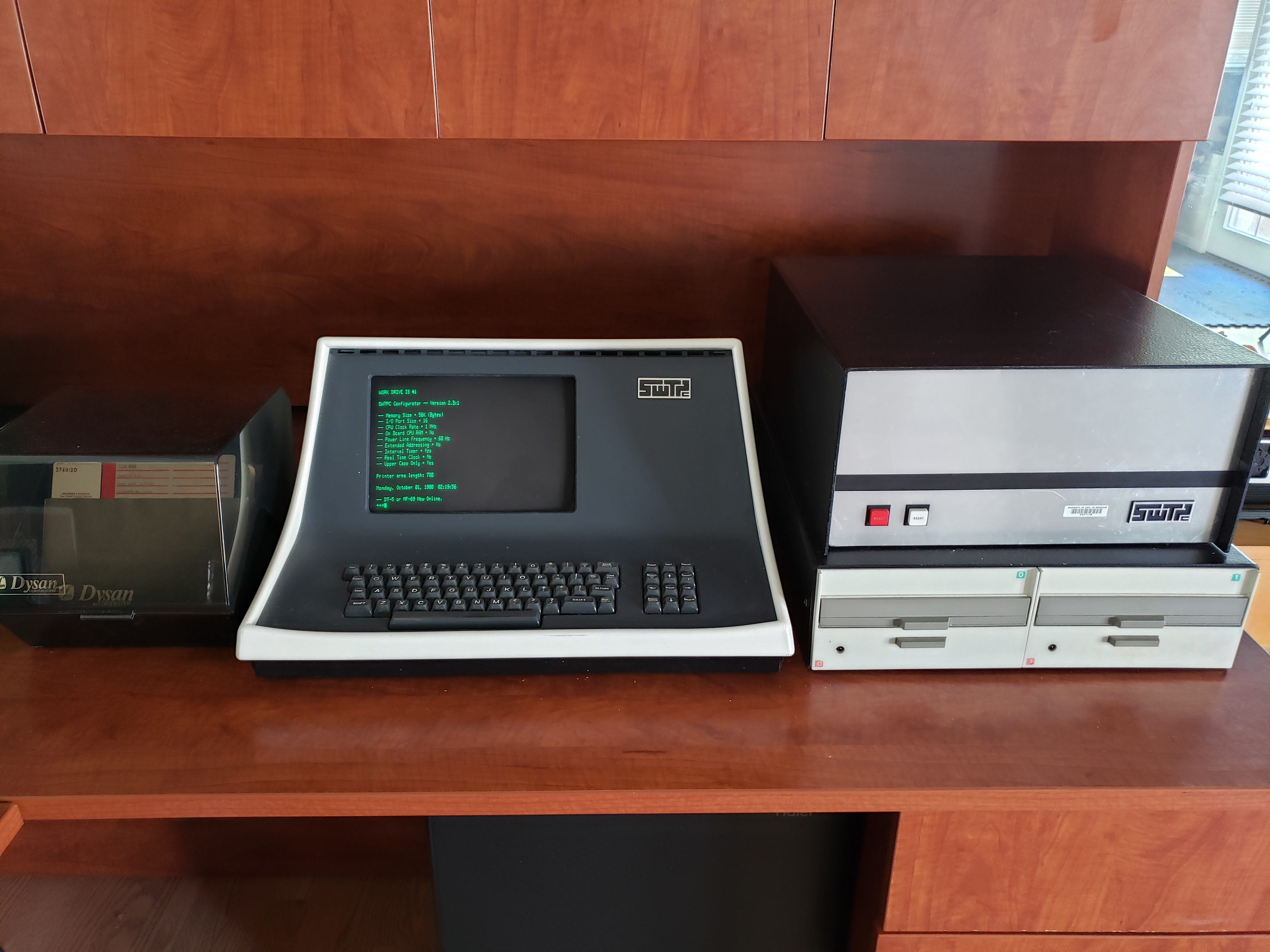
In 1979, SWTPC released the S/09, an updated model for their 6809 Computer line. Thanks to a better motherboard design courtesy of the MP-MB board, there were now 16 expandable slots with 8 being SS-50 and the other 8 being SS-30. The latter were positioned at the back so peripherals could be connected to them. This new model also had a 20-bit address bus for addressing up to 768K of RAM. It also supported both multi-user and multitasking capabilities. A built-in dynamic memory management system allowed you to allocate a set amount of RAM in as small as 4K chunks to individual users or tasks. The CPU could be configured to run at 1MHz or 2MHz. I suspect a good number of users upgraded to 2MHz by the early 80s.
While the computer came with a built-in OS called MIKBUG (later changed to SWTBUG), this was meant only for basic I/O communication and examining and changing memory address values. Virtually all units used FLEX as their main OS. FLEX was originally released in 1976 for the 6800 and was an extremely powerful and FLEXable system that used only 8K of RAM! It was used for disk management tasks, file management, programming, running utilities, word processing, spreadsheet work and other fun stuff. The FLEX Boot disk was completely customizable, so users could add whichever commands, programs and files they needed.
Some Operating Systems were released that took advantage of the multi-user and multitasking capabilities, such as UniFLEX, which was an almost 100% clone of Bell Lab’s UNIX. A remarkable feat for an 8-bit computer. OS-9 Level 1 and Level 2 were also released around the same time.
My computer came from the University of Missouri and was used to conduct thermal analysis on plants for the Department of Forestry. The actual model number is S/00, which is identical to the S/09, except the user was expected to build and install their own CPU card and RAM cards. Mine runs at 1MHz and has 56K of RAM. It came with a DMF-2 dual 8-inch floppy disk drive and a number of disks. I later acquired the CT-82 Terminal.
To transfer programs and files to the 6809 from a modern computer, I use HyperTerminal, although any terminal emulator with file transfer capabilities will do. I convert the programs into S1/S9 Cassette code using the P command in the Monitor. I save the output as a text file and then use the L command on the 6809 to transfer the text over the serial line at 9600 baud and save the program when complete. I am sure more modern solutions exist using CF cards or other technologies. If and when such a solution is available on the market, I will probably buy them.
The 6809 was the most powerful 8-bit microprocessor of its day and it had many 16-bit instructions that made it an Assembly Programmer’s dream machine. I have had lots of fun tinkering with it, learning the programming languages and utilities and have made some games to play on it. Visit my
Games section to see more.
Here is a video review of this remarkable computer: